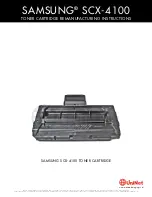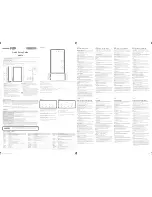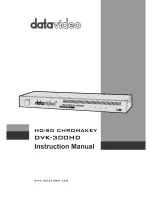
403134-YIM-E-0311
40
Johnson Controls Unitary Products
Checking Supply Air CFM
The RPM of the supply air blower will depend on the required
CFM, the unit accessories or options and the static resistances
of both the supply and the return air duct systems. With this
information, the motor speed tap (direct drive) or the motor
pulley number of turns open (belt drive) can be determined from
the Blower Performance Data Tables.
Note the following:
1.
The supply air CFM must be within the limitations shown in
the Unit Physical Data Table 8.
2.
Pulleys can be adjusted in half turn increments.
3.
The tension on the belt should be adjusted as shown in the
Belt Adjustment Figure 19.
4.
Tighten blower pulley and motor sheave set screws after
any adjustments. Re-check set screws after 10-12 hrs. run
time is recommended.
Start the supply air blower motor. Adjust the resistances in both
the supply and the return air duct systems to balance the air
distribution throughout the conditioned space. The job
specifications may require that this balancing be done by
someone other than the equipment installer.
To check the supply air CFM after the initial balancing has been
completed:
1.
Remove the two 5/16” dot plugs from the blower motor and
the filter access panels shown in Figure 8.
2.
Insert at least 8" of 1/4 inch tubing into each of these holes
for sufficient penetration into the air flow on both sides of
the indoor coil.
NOTE:
The tubes must be inserted and held in a position
perpendicular to the air flow so that velocity pressure
will not affect the static pressure readings.
3.
Using an inclined manometer, determine the pressure drop
across a dry evaporator coil. Since the moisture on an
evaporator coil may vary greatly, measuring the pressure
drop across a wet coil under field conditions would be
inaccurate. To assure a dry coil, the compressors should
be deactivated while the test is being run.
4.
Knowing the pressure drop across a dry coil, the actual
CFM through the unit can be determined from the curve in
Pressure Drop vs. Supply Air CFM (Figure 21).
After readings have been obtained, remove the tubes and
reinstall the two 5/16” dot plugs that were removed in Step 1.
NOTE:
De-energize the compressors before taking any test
measurements to assure a dry indoor coil.
Figure 21: Pressure Drop Across Coil
Table 17: Power Exhaust Specifications
Model
Voltage
Motor
Motor
Fuse Size
CFM @
0.1 ESP
HP
RPM
1
1. Motors are multi-tapped and factory wired for high speed.
QTY
LRA
FLA
MCA
2PE04703025
208/230-1-60
1/2
1725
1
23.7
4.4
5.5
8
1350
2PE04703046
460-1-60
1/2
1725
1
4.1
1.7
2.1
5
1350
Belt drive blower systems MUST be adjusted to the
specific static and CFM requirements for the application.
The belt drive blowers are NOT set at the factory for any
specific static or CFM. Adjustments of the blower speed
and belt tension are REQUIRED. Tighten blower pulley
and motor sheave set screws after these adjustments.
Re-checking set screws after 10-12 hrs. run time is
recommended.
Failure to properly adjust the total system air quantity and
static pressure can result in extensive system damage.
0
0.1
0.2
0.3
0.4
0.5
0.6
0.7
0.8
0.9
0
500
1000
1500
2000
2500
3000
3500
NOMINAL CFM
PRESSURE DROP (IWG)
036
048
060
















































